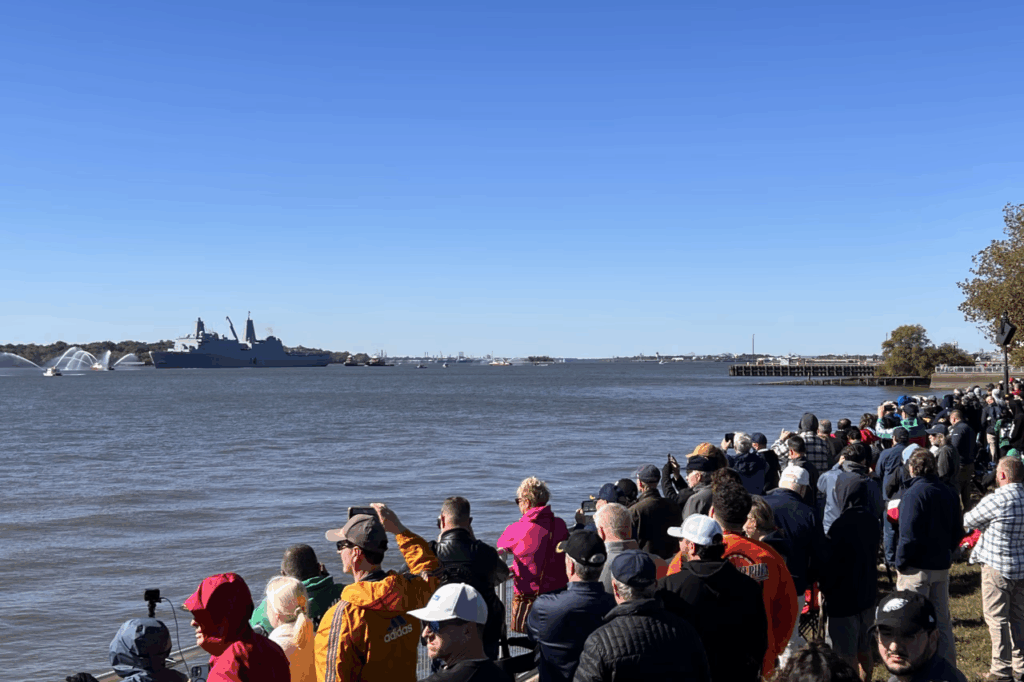
Featured in The Wall Street Journal – Read the full article here
Philadelphia
Naval and Marine leaders gathered at Philadelphia’s Navy Yard last week to celebrate the U.S. Navy’s founding on Oct. 13, 1775. Military and political leaders honored the Navy’s achievements on the harbor where it was founded.
But as the ceremony paid homage to America’s great triumphs of the seas—from the Great White Fleet to the Battle of Midway—tension bubbled beneath the surface. Less than 2 miles away sits the historic Philly Shipyard. Sold in December to a South Korean company, it is now the Hanwha Philly Shipyard. And it serves as a reminder that American naval and commercial shipbuilding isn’t what it used to be.
The Navy’s greatest threat, many attendees said, may lie ahead. American shipbuilding has been declining for decades, but 2025 is already the Chinese navy’s strongest year in history. In September, China saw a $16 billion merger of two state-controlled shipbuilders to form the world’s largest shipbuilding enterprise, the China State Shipbuilding Corp. The country now boasts more than 200 times America’s shipbuilding capacity, with its industry accounting for nearly 75% of all worldwide new ship orders last year.
Beijing’s buildup has clear aggressive intent. China conducted naval and joint air-sea exercises in the Taiwan Strait in February and April. Whereas American commercial and naval ships are generally built in separate yards, Beijing follows a “military-civil fusion” strategy—centralizing control of both industries in the same place, allowing for easy conversion in wartime.
China’s naval escalation is also tailored to American weaknesses. To subvert the U.S. Navy’s reliance on concentrated platforms and forward bases, Beijing is building long-range sensor networks and missile systems. In April, scientists unveiled quantum magnetic sensor technology that targets the stealth advantage of American submarines.
President Trump and Defense Secretary Pete Hegseth are pushing to expand shipbuilding capacity. Mr. Trump created a new Office of Shipbuilding in March and signed an executive order to restore U.S. maritime dominance in April. Mr. Hegseth has made shipbuilding a top priority in the 2026 Pentagon budget. But sluggish supply procurement and workforce constraints have slowed their efforts.
Maria Behm, president of the Fleet Reserve Association, says a reason for the decline is that fewer young people want to work in factories: “They’ve taken away the shop classes. . . . If they bring back the shops—machine shop, boat shop, shipbuilding, all of that—America would be so much greater.”
Efforts are under way to attract the young. Booths at the celebration in Pennsylvania buzzed with activity from nonprofits, private companies and university research teams—many of which were focused on the nurturing and acquisition of talent. The workforce development company DVIRC has placed more than 9,000 young people in manufacturing jobs since 2021, says CEO Chris Scafario.
Hope, hard work and American ingenuity kept chins high and eyes shining as the ceremonial Parade of Ships set sail across the Delaware River. A storm rescheduled most of the weekend’s festivities, so the calm morning felt like a stolen moment of peace. For the U.S. Navy, the calm may precede a different kind of storm.
Ms. Farmer is a Joseph Rago Memorial Fellow at the Journal.
